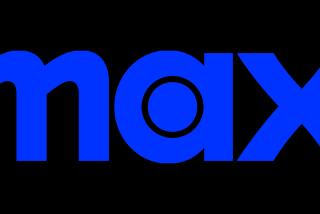Excite@Home Offering ‘Firewall’ to Boost Security
- Share via
Excite@Home, stung by recent criticism that its “always on” broadband service leaves its subscribers vulnerable to hackers and other Internet mischief-makers, will start offering its customers special software to close such security gaps.
The service, whose 1.2 million subscribers access the Internet at high speeds via their cable television lines, will today announce a plan to provide them with a “firewall” program from McAfee.com at a cut rate.
The program is designed to keep unauthorized users from penetrating a subscriber’s computer--and sometimes the @Home network itself--via the subscriber’s Internet connection. The announcement comes just weeks after Excite@Home discovered that “spammers”--businesses and individuals who clutter the Internet with thousands of unsolicited junk-mail messages--were illicitly exploiting security holes in its network to funnel their messages onto the Web.
The McAfee software will help close those holes, although the two companies said they began negotiating their deal before the flaw was discovered.
Under the arrangement, @Home subscribers will receive the McAfee program for free on a 90-day trial, and at an undetermined discount price after that. The program, which requires a service contract with McAfee.com, will be made available commercially to other buyers for less than $50 a year before the end of March, a McAfee spokesman said.
Excite@Home, based in Redwood City, Calif., had 27.7 million different or unique visitors on its network in December, according to MediaMetrix.
Computer managers in business have long relied on firewalls to safeguard their corporate networks from intruders. Until recently, however, there has been little demand from consumers for similar programs, largely because few perceived their computers as vulnerable and because firewall programs are extremely complicated to install and maintain.
But the security vulnerabilities of home computers have received more publicity in recent years for two reasons.
One is the growth of high-speed broadband Internet connections for the home via digital telephone lines or cable networks. These connections differ from conventional dial-up modem connections in that they are live whenever the computer is turned on, as opposed to only when a user dials into his or her Internet service--vastly increasing the opportunities for incursions by outsiders.
Another reason is that home computers now tend to store more sensitive personal data than ever before, including information about users’ businesses, bank accounts and other financial assets.
“There’s more and more malicious behavior out there, including hacker activity and viruses,” said James Balderston, a business analyst at McAfee.com, “while the volume of what @Home users are putting in their boxes is increasing.”
For all that, an Excite@Home spokesman downplayed the real risks of incursions by outsiders to subscribers who engage only in conventional Web surfing and exchanges of e-mail.
“I wouldn’t define it as a rampant problem,” said Jay Rolls, @Home’s vice president of network engineering, although he acknowledged that “some subscribers might be looking for peace of mind.”
Other users, however, need the network safeguards “because their behavior is riskier,” he said. These include subscribers who download software programs from Web sites of dubious integrity or who indiscriminately open e-mail attachments from strangers. Such programs and messages may contain viruses, which are programs that invade the users’ PCs, or “Trojan horses,” which can hijack the user’s Internet connection to use as a portal onto the network itself.
Rolls also acknowledged that many individual Excite@Home users have exposed the service to hackers by improperly setting up their own home networks. These networks enable two or more home computers to share printers and Internet access. If improperly installed, the software running those connections can unwittingly provide outsiders with unauthorized access to the @Home network.
Just such a problem surfaced late last year, when a group of independent Internet monitors traced an explosion of spam to @Home. The monitors, complaining that @Home had procrastinated in resolving the problem, threatened to impose a “Usenet Death Penalty” on the service--a step that would have blocked all its subscribers from posting messages to thousands of special-interest community groups on the Web.
The threat was lifted Jan. 14, after @Home discovered the spam was circulating via its subscribers’ network access gaps and took steps to close them.





